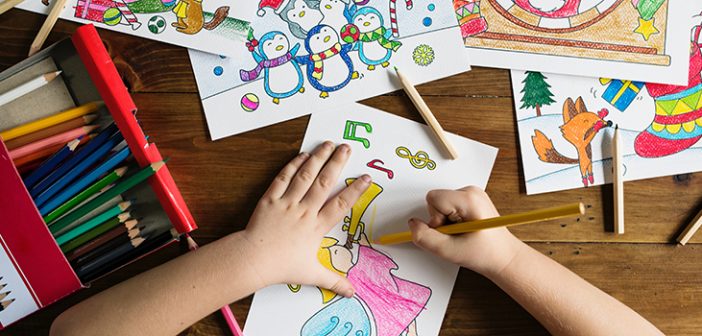My Child has SPD…now what?
Tips on how to manage Sensory Processing Disorder
A friend of mine recently confided in me that her child was diagnosed with SPD. What’s that? I asked. Sensory process (or sensory integration) is the way in which the central nervous system of your body receives messages from the senses of your body and uses that information to move, act or behave. SPD (Sensory Processing Disorder) is when the sensory signals received by the nervous system do not become organized in the right response.
A child who has SPD may find it hard to process and act appropriately when his nervous system receives this sensory information and doesn’t know how to respond to it. It affects daily living, causing problems and tremendous challenges for a child if not treated or managed properly. Kids with sensory processing issues can be over- or under- sensitive to touch. This can make everything from eating foods with various textures to showering a challenge.
She had no idea how to help her child through this devastating diagnosis, and at first felt completely helpless and lost. How is he going to figure out normal everyday activities like brushing his teeth? Playing with a toy? Hugging me when he doesn’t know I’m about to hug him? It’s heartbreaking to think about.
Since I was new to this topic, I started thinking about how many other children are struggling with this disorder, and how their parents must feel the same helplessness.
Here are some ways to help your child cope with tactile sensitivity:
Give Warning:
If you’re about to touch your child, let them know you’re going to. “I want to give you a hug.” If you’re giving them a bath and it’s time to wash up or dry off, let them know. “I’m going to wash you up with your washcloth now!” “Time to dry off, here comes the towel!”
Let them create Boundaries with People:
It’s important to let your child know it’s ok if he doesn’t want to touch or hug anyone if he doesn’t want to, a key lesson for any child regardless if they’re struggling with SPD or not. “It’s ok if you let Grandma know you love her but aren’t into giving hugs. She’ll understand.”
Consider Weighted Blankets and Toys:
Piling on blankets or weighted blankets can be a lifesaver when it comes to a good night’s rest. The feeling of being centered helps them remain calm. Mosaic Blankets come in different designs and sizes for kids and adults and help tremendously. Weighted toys are also becoming more popular for children with SPD. Faber-Castell makes a great toy called Happy the Hedgehog that is weighted (perfect to sit on his lap at school) and has a reversible sequined back to ease tension and help with fidgeting.
Let your child wear what he’s/she’s comfortable in:
Is there a certain shirt or pair of shorts that your child feels the most at ease in? Instead of battling him to try on something else, remember that he may feel safe and calm in those shorts. Maybe the fabric doesn’t bother him like his other pairs of shorts. If that’s the case, get more of the same types of clothing he likes in different colors, so that he can be in something different but still feel safe in what he likes best.
Let him try it first:
If he’s anxious about you wiping his mouth or fixing his hair, make him aware of the problem and let him try and fix it first. If he doesn’t want to do it, you’ve now given him notice that there’s a problem that needs fixing. Let him know that you’re about to fix it for him before diving in. “You have cream cheese on your face from your bagel! Mommy needs to wipe it off, ok?”
Let Him Experience Different Textures:
Crafting and art seem to work best when helping children with SPD experience different textures with ease. Have your child make their own Slime (WeCool has some great DIY Kits) or try molding some clay to color with, like this Coloring with Clay kit. For soft touches, try a stuffed animal that’s small enough to travel around with like these from Steiff a personal favorite brand of ours.
Separate his Food:
Divider plates make it easy for children with SPD to feel calm that their food isn’t touching. This definitely makes mealtime easier for everyone. HopSkip makes some adorable dinner plates that you can find at Target.
Provide things to fidget with:
My friend’s son loves this Sequin Drawing Board that he can touch or use with a pen. You can also have a few of these Stress Balls around the house and in the car to let some of that nervous energy out.
The most important thing you can do for your child is to be aware of his or her sensitivities and find solutions that work for each. It doesn’t have to be stressful for you both daily if you experiment with ways that can help ease your child’s discomfort and anxiety.
Does your child struggle with Sensory Processing Disorder? If so, what tips have helped them (and you) deal with daily activities?



Thanks for this articles. https://eduzaurus.com/custom-papers
Great advice. We have a child at my sons co-op school with spd and I had never even heard of it before but am so glad his mom is open and communicates with us on if there’s anything we as the parents can do etc.
Good tips for childern and the subject of this article is very important for me because I am a teacher and I face many problems of children and parents should read this article for their awareness. custom essay writers